Explore the different types of peccaries found in Costa Rica, as well as their importance in the local ecosystem, habitats, behavior, and social structure.
GVI
Posted: May 10, 2023

Jana Jansen van Vuuren
Posted: October 10, 2022
10 min read
It’s quite a task to take in all of Cambodia, so we’ve come up with a list of nine of the best things to do in Cambodia that you could experience while volunteering abroad.
From visiting a royal palace to tucking into Cambodian street food at a night market, there’s ample opportunity to take in Cambodian culture in meaningful ways.
Let’s take a look at nine of the best things to do in Cambodia while volunteering abroad.
When visiting Cambodia, why wouldn’t you want to see the building featured on the country’s flag?
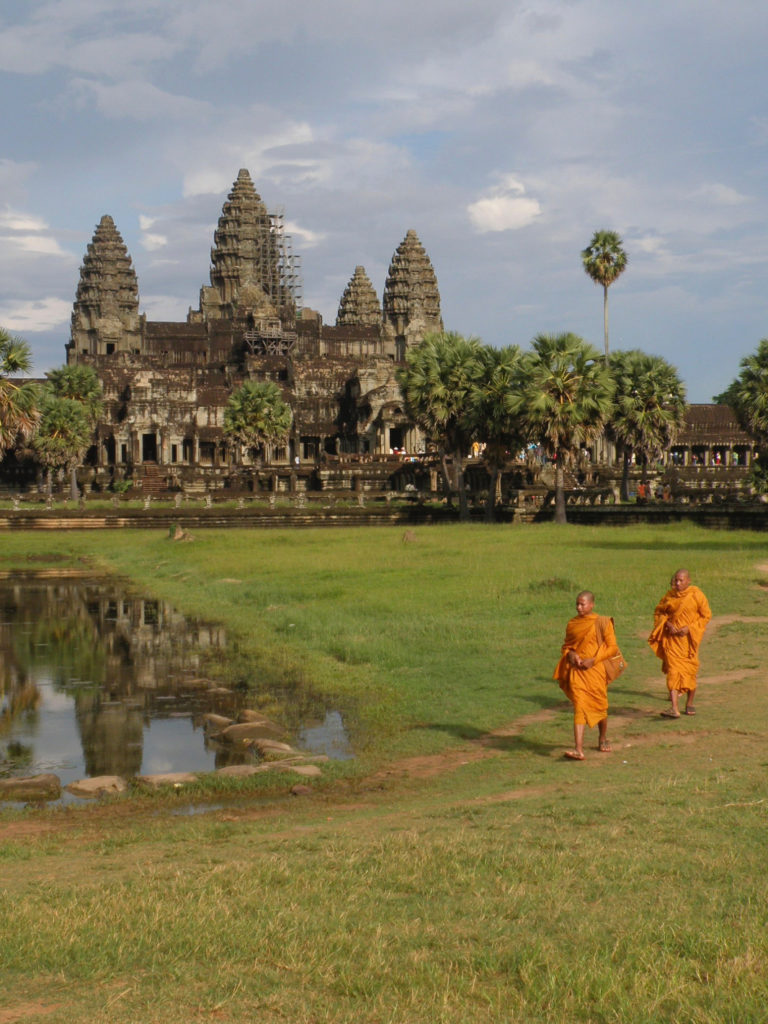
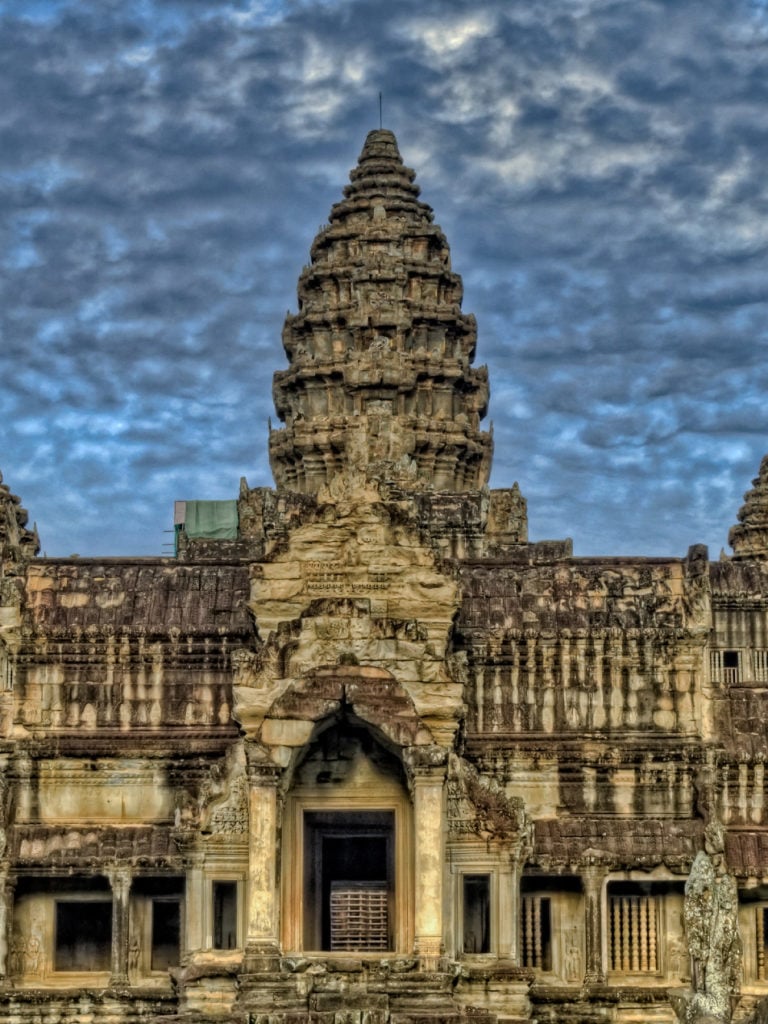
You can do just that by taking a trip to the Angkor Archeological Park, and viewing the Angkor Wat – a Theravada Buddhist temple which is also the largest religious structure in the world. This site pays tribute to King Suryavarman the second, a ruler of the region from 1113 AD to 1150 AD.
Originally dedicated to Lord Vishnu – the Hindu god responsible for the upkeep of the world – its five towers mirror the five-peaked home of the gods, Mount Meru. The surrounding moat portrays the cosmic ocean – a mythological representation of the world enveloped in water.
To get across the lily-pad-clogged waters of the moat, you’ll need to cross the Naga bridge. This is a stone walkway designed to look like the giant serpents of Hindu lore. You’ll then enter through towering gateways – tall and wide enough to have allowed access to the elephants used by the mediaeval Khmer army.
And once you reach the temple, you’ll spot its five towers that were originally coated in gold, and see its foundation, which is still topped with a layer of gold leaf. Intricate carvings depicting scenes from Hindu mythology, and images of devatas – Hindu deities – cover just about every surface of Angkor Wat – including its walls, ceilings, floors and doorways.
This is the perfect place to get a cultural close up of Cambodia and learn about its history.
Enjoy a responsible travel experience by taking it all in. Snap a picture for the memories, and resist the temptation to touch the designs – which are over 900 years old and are easily damaged by frequent touching.
Only a ten-minute car ride away from Angkor Wat, is where you’ll find the complex of Angkor Thom, home to the Bayon Temple – a Buddhist sanctuary built shortly after Angkor Wat.
The many-faced towers of the Bayon are said to represent the thousands of faces of Avalokiteshvara – a deity considered to represent compassion.
Besides Angkor Wat and Angkor Thom, there are hundreds of other sites to visit in the Angkor Archeological Park.
In fact, Australian researchers have shown that this, the capital of the Khmer Empire – an empire which ruled a number of Asian countries for more than 600 years – might very well have been the largest city complex to exist before the industrial revolution.
Must-see attractions include the filigree carvings of the rusty-hued Banteay Srei temple, the ruins of Prasat Beng Mealea, and the Ta Prohm temple. To get some insight into what these locations look like, imagine temples overgrown with jungle plants, and surrounded by the sounds of nature.
This area is huge, and you could easily spend an entire week looking out for temples and ruins hidden amongst the jungle foliage.Travel to Cambodia

Be sure to wear a good pair of walking shoes, plenty of sunscreen, a hat, and don’t forget snacks. Also, keep in mind that many of these sites are still in active use by Buddhist monks and the local community.
To show respect, you can follow these local customs: dress modestly, walk in a clockwise direction whenever possible, and never point the bottom of your feet at a statue.
As the gateway to the ruins of Angkor, Siem Reap is a great spot to visit before or after seeing the ruins. And this small town is overflowing with opportunities to experience Cambodian culture.
Learn about Cambodian art – both past and present – by visiting the training facilities of Artisans Angkor, a social enterprise that provides training in traditional Khmer crafts – like silk weaving, stone and wood carving and traditional painting.
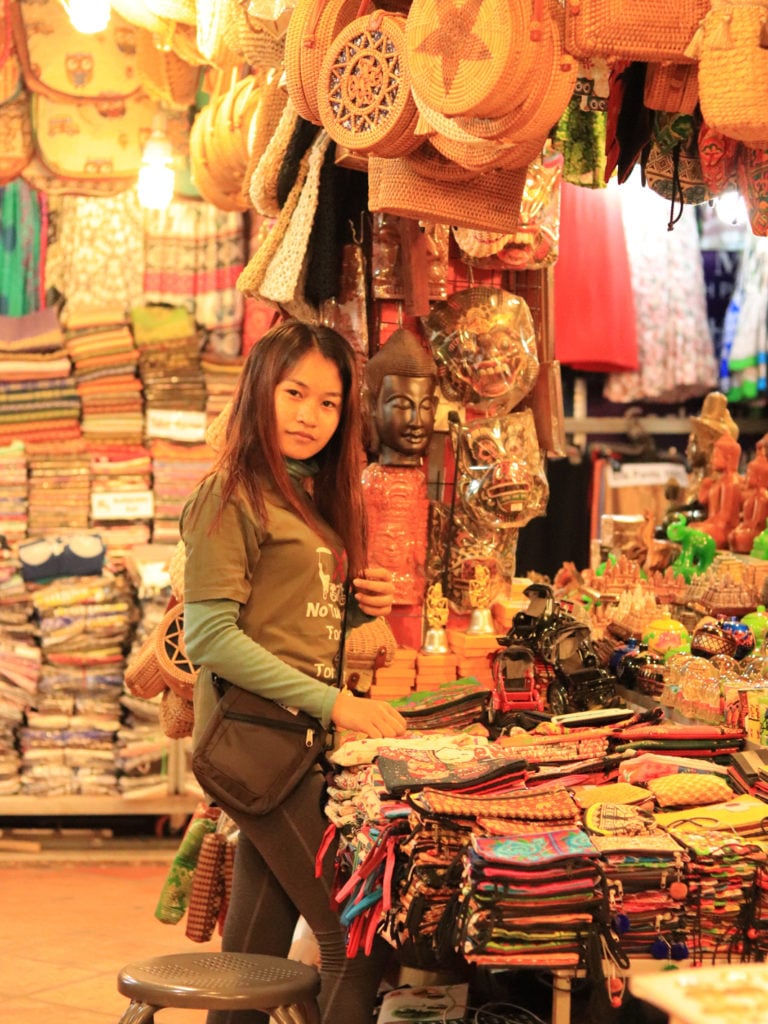
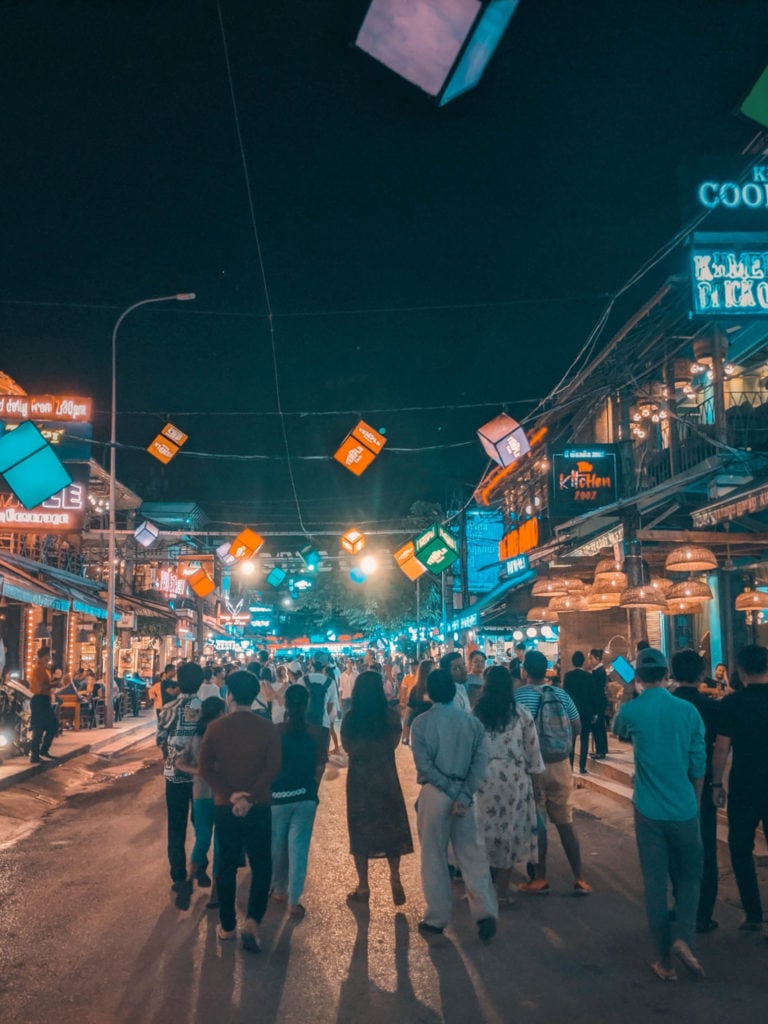
Or wait for the sun to set and take a tuk-tuk – a three-wheeled taxi – to one of Siem Reap’s night markets. Here, you can take your tastebuds on a journey of their own when you try Cambodian-style street food.
Or, fit in some memorable shopping when you purchase some of the traditional arts and crafts you’ve seen around town to keep as souvenirs.
Siem Reap is also home to a theme park and museum known as the Cambodian Cultural Village. Here you can see reconstructions of thirteen Cambodian villages, famous Cambodian sites, and wax figures of cultural icons.
You could even catch daily performances of traditional dances, and get a glimpse of a traditional wedding ceremony!
Read more about what to do in Siem Reap.
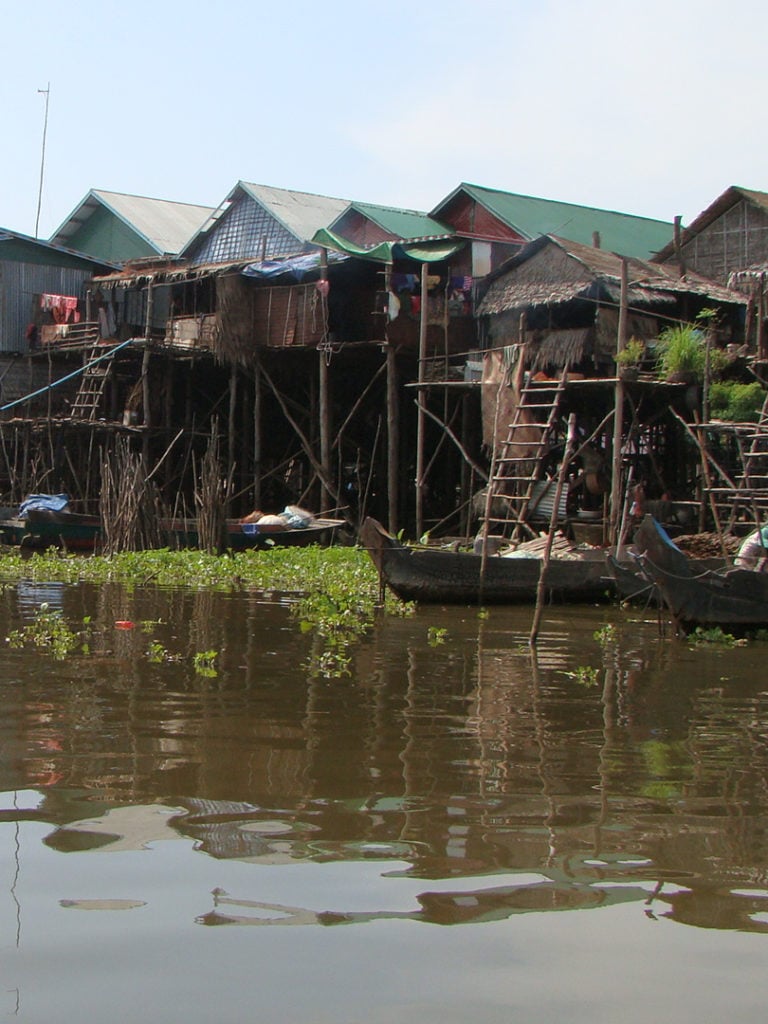
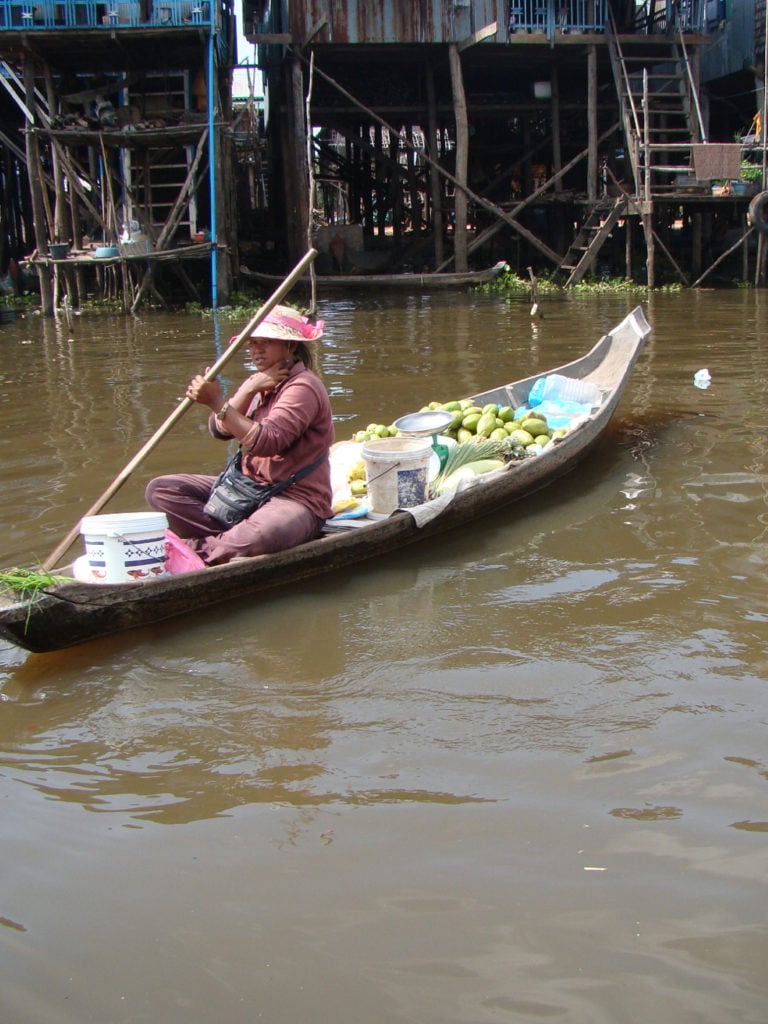
Visit some of the smaller villages close to Siem Reap to experience life along Cambodia’s monumental central lake.
And if that isn’t enough, Siem Reap is also set on the banks of the Tonle Sap – the Great Lake of Cambodia – where rice is cultivated along the water-logged banks and fishing boats bob where the water runs deeper.
Visiting one of the several floating villages – villages of wooden homes built on stilts – gives you the opportunity to see what life has been like for many Cambodians for centuries.
From Siem Reap, you can either take a flight to the capital of Cambodia, Phnom Penh, or travel by boat across the Tonle Sap during the wet season – from July to March.
Once you’re there, make your way to the hilltop temple known as Wat Phnom – the centre of celebration for the Cambodian New Year and many other Cambodian festivities.
From Wat Phnom temple, you can hop in a tuk-tuk and take a ten-minute ride to the Royal Palace – a golden structure that seems to rise up out of the river itself. The palace is home to the current king of Cambodia.
While the entire compound isn’t open for viewing, there are areas of the palace that you are allowed to visit.
Some of the highlights of the palace tour are the throne room – with its show-stopping, nine-tiered throne – and the Silver Pagoda that houses a diamond-encrusted gold Buddha, as well as one carved out of a chunk of green crystal.
After visiting the royal palace, take a breather by strolling or cycling down the Sisowath Quay – a river walkway that runs along the edge of the royal compound.
Then visit Wat Botum – the temple of lotus – in Wat Botum Park, where you’re likely to find locals taking a break from their daily duties.
You can also take a trip to the other side of the palace to see Wat Ounalom. Here you can observe how many Cambodians engage in their daily spiritual practices. And end off your day by taking part in the meditation sessions hosted at the Wat Langka.
See how Cambodian culture comes together by experiencing the Cambodian New Year. Rice has an important place in the past and present of Cambodia, and in April – just before the new rice is planted – Cambodians celebrate the Khmer New Year.
On the first day of the festivities, the streets are overtaken by strings of colourful flags. Homes are decorated with Buddha shrines laid with tributes of food, candles, flowers, and incense. Local people follow the tradition of washing their faces in the morning, their chests in the afternoon, and their feet in the evening – symbolising the cleansing away of the mistakes of the past year.
The second day is all about giving. Gifts are exchanged between family members, and supplies are donated to the monks and the needy. At temples, five huge piles of sand – called stupas – are built, one for the Buddha and the other four for his most dedicated disciples.
On the third day, the whole family goes to the temple to bless the stupas and see the elders wash statues of the Buddha with perfumed water. This is also when you’ll see children playing traditional games and throwing coloured water and powder at one another.
And in the capital city of Phnom Penh, there is also a huge procession with live music, and traditional dancers swaying through the streets.
And after the festivities have faded, you can rekindle that spark by sampling even more of the Cambodian cuisine.
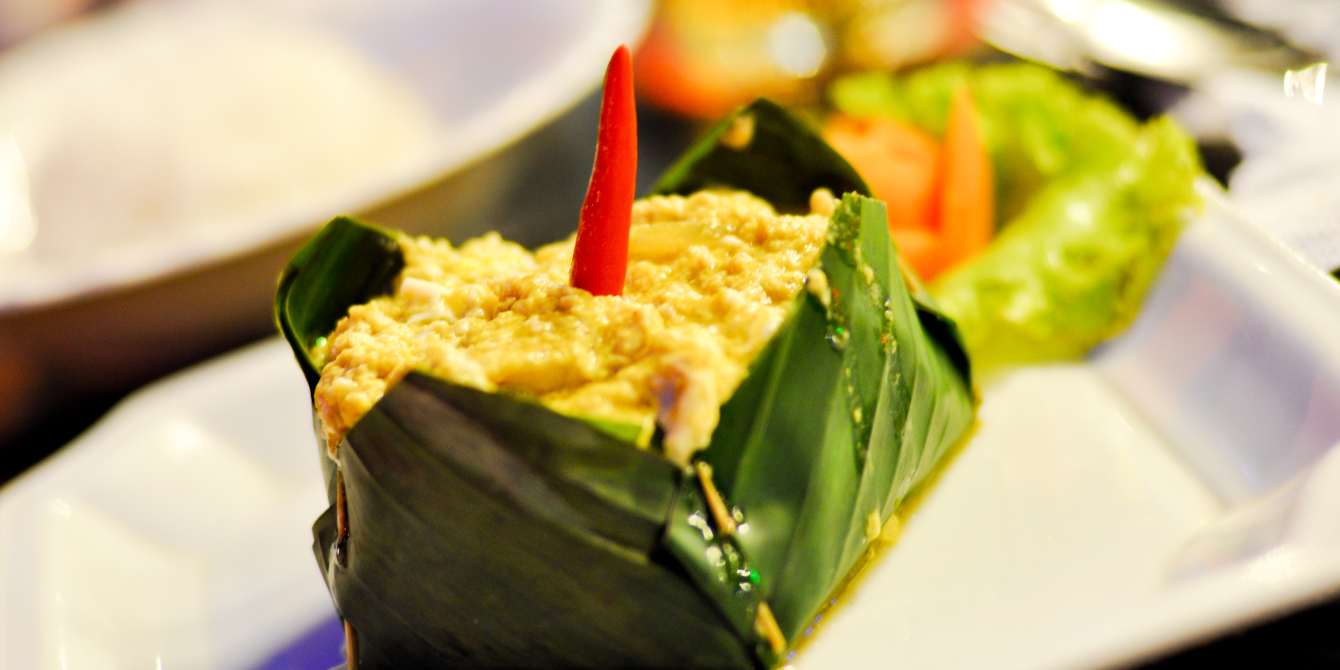
Creamy, spicy Amok is a scrumptious seafood dish served year-round throughout Cambodia.
When tucking into new dishes, you may recognise elements of Thai, Indian and French cuisine popping up in Cambodian-style food – like the sweet Thai flavours, Indian spices, or the French baguette you’d get on the side of your Cambodian-style curry.
But you’ll also be able to tell when you’re eating a traditional Cambodian dish.
Firstly, Cambodia is home to a wide array of award-winning rice, which is why Cambodian dishes are big on rice and rice noodles. And, because of the expansive Mekong River and Tonle Sap Lake, fresh fish is a common component of Cambodian-style cuisine too.
And then there’s the contrasting flavours of Cambodian-style dishes: salty, sweet, sour, and bitter. Common ingredients include tamarind and oyster sauce, turmeric, ginger, cardamom, lemongrass and lime leaves.
You may even pick up on the flavour of prahok –a fermented seafood paste – which is added to a wide variety of foods.
Every dish is served with a number of garnishes so that the diner can adjust the flavour to their liking. You’ll often be served a small helping of garlic, limes, and pepper with your dish.
Read about ten Cambodian dishes you need to try.
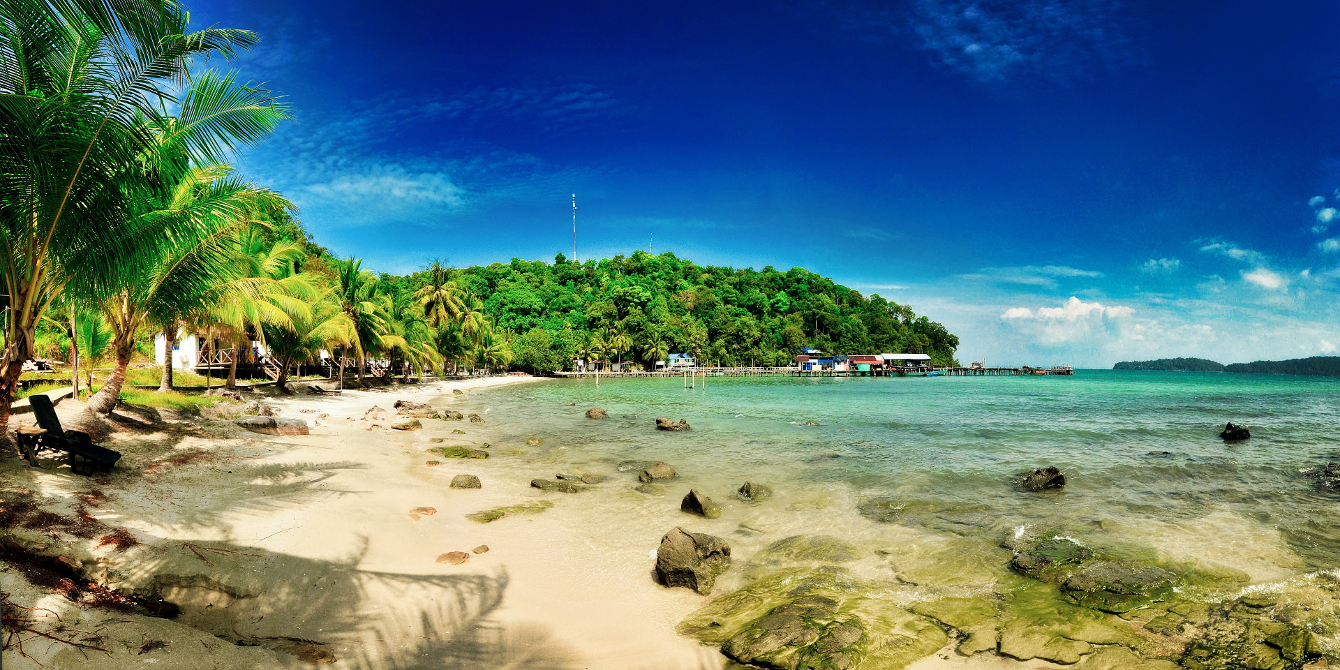
You can easily spend your entire day island hopping along Cambodia’s coast.
Cambodia’s reputation as a must-visit destination for beach lovers, is well-deserved. It has year-round sunny weather, long stretches of relaxing beaches, and several secluded islands all available in close proximity.
Spend your time lounging in a hammock under the palm trees, or diving to view the bright corals and myriad marine species beneath the water’s surface.
The two most popular beach towns are Sihanoukville and Kep.
From Sihanoukville, hop on a boat to the nearby islands of Koh Rong, Koh Rong Samloem, or Koh Russei. Be sure to stay overnight at least once, and bring along your goggles and snorkel, to see the bright blue glow of bioluminescent plankton swirling in the dark water at night.
From Kep, you can head to the island of Koh Tonsay, also known as Rabbit Island, popular to researchers and tourists alike for its underwater reefs and marine life.
Read more about why marine conservation is so important.
Ecotourism is just starting up in Cambodia. By visiting one of the many national parks, you’ll help show authorities that there is value in protecting these areas.
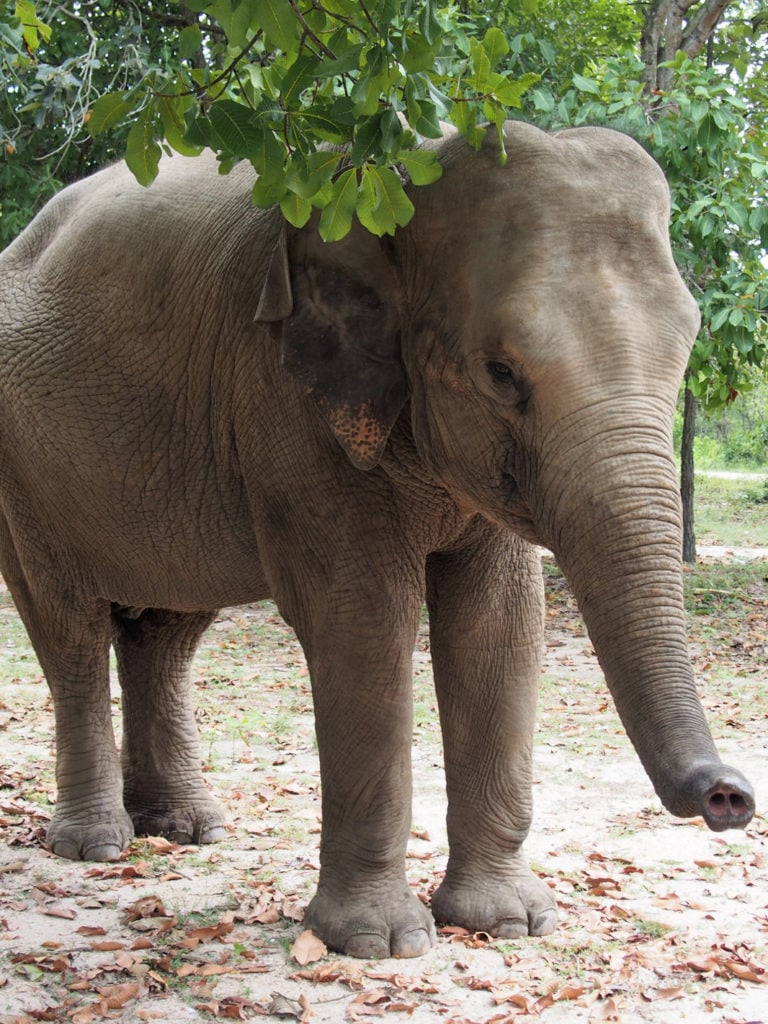
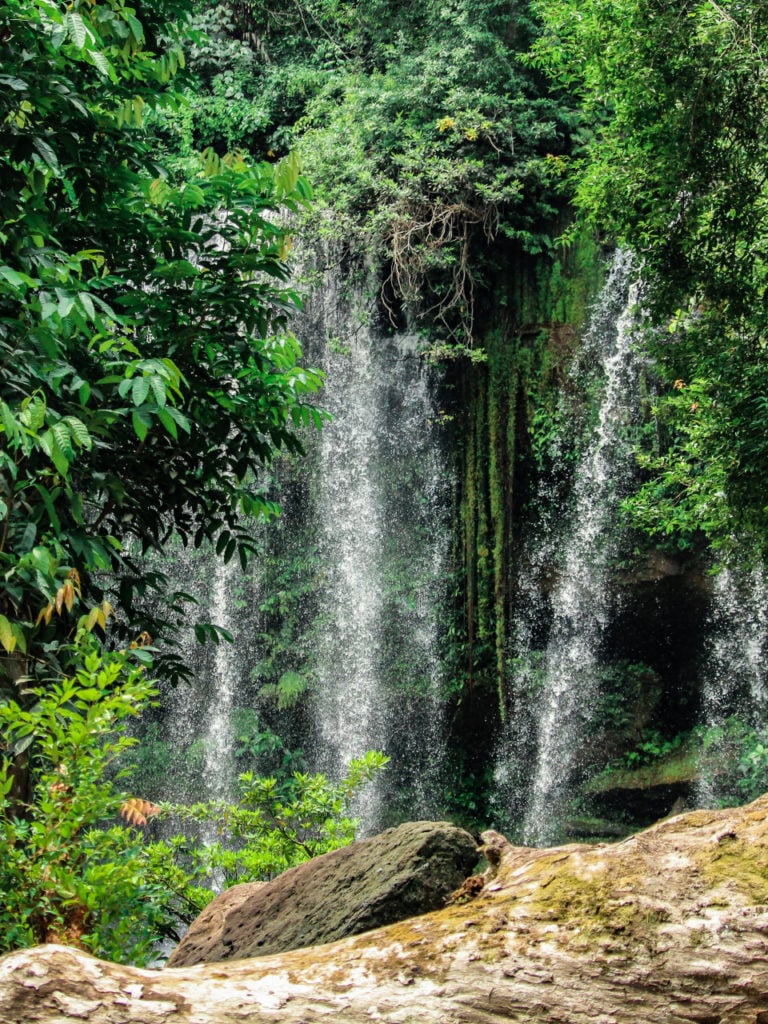
Cambodia’s forests are home to a myriad of creatures great and small. Cambodia’s elephants are of particular interest because of their endangered status.
Elephants have been used for transport since the time of the Khmer Empire. Today we understand that these types of activities have had a negative impact on the well-being of Asian elephants, and conservation efforts focusing on this species have become more prominent.
Close to Siem Reap, there are a number of elephant sanctuaries working on restoring the forest and protecting elephants from kidnappers and poachers. They also aim to support economic growth and education in the villages so that local people don’t need to depend on activities involving elephants to earn a living.
In the Cardamom Mountains – named for its abundance of cardamom plants – rare, endangered species like clouded leopards, sun bears, pangolins, and gibbons can be spotted.
And, if you visit Ream National Park, you can take a trip down the mangrove-lined channels and spot everything from cranes, pelicans, and monkeys, to turtles, dolphins and sea cows.
There are lots of reasons to visit Cambodia, but why not get the best travel experience by volunteering in Cambodia? Volunteer trips to Cambodia offer a meaningful way to visit the country while also contributing towards sustainable development solutions.
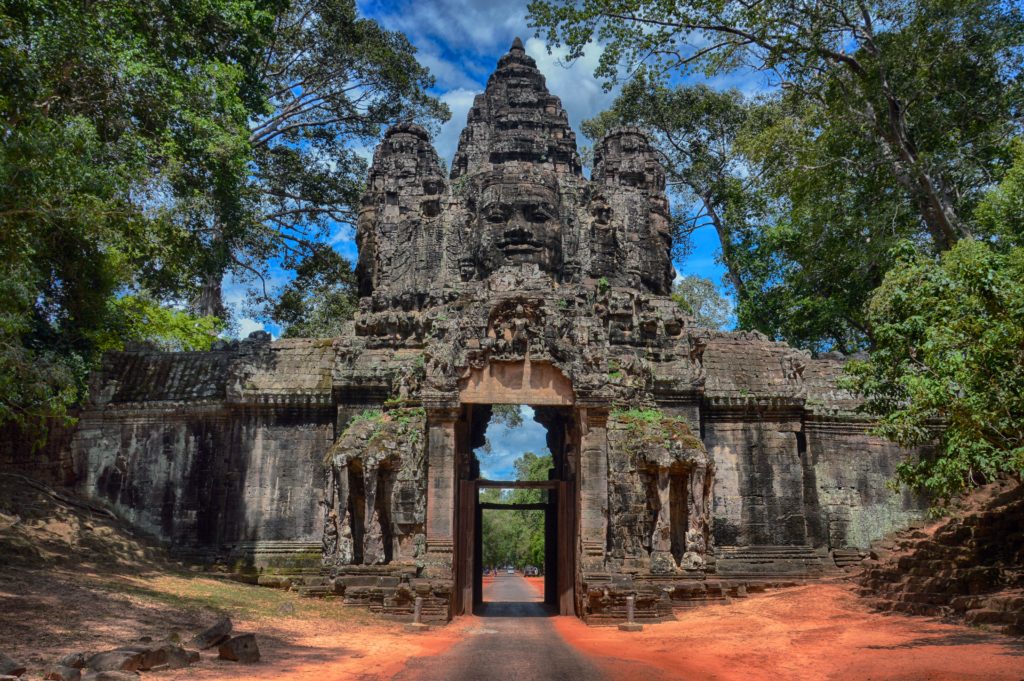
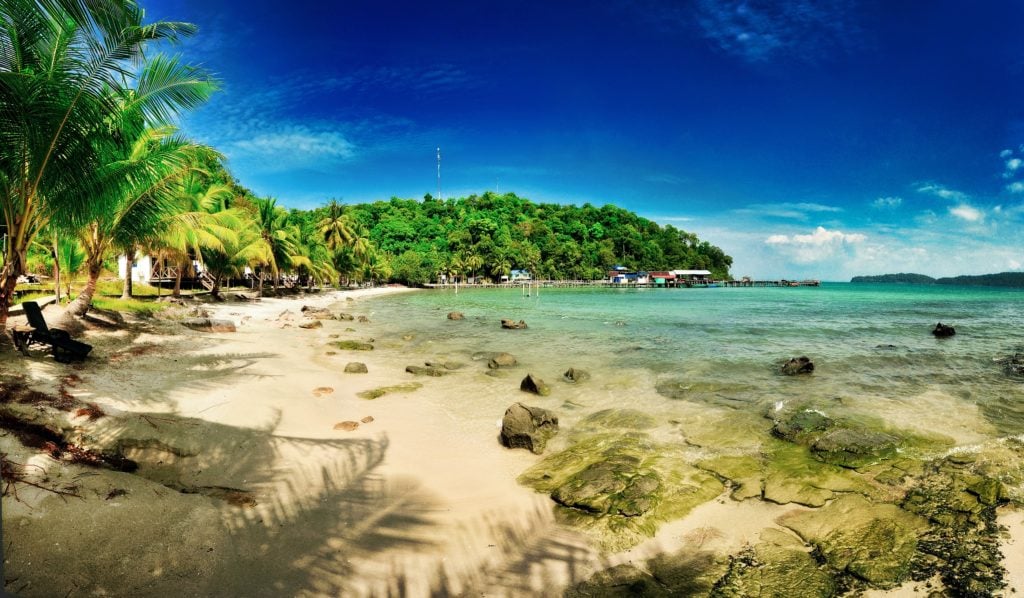
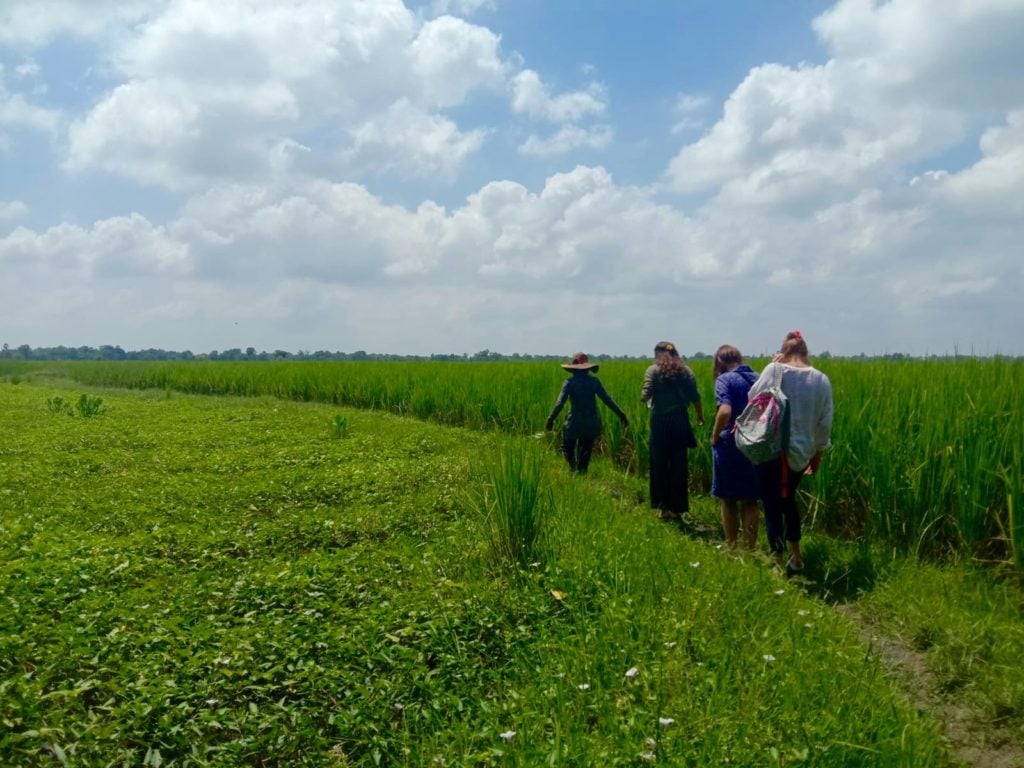
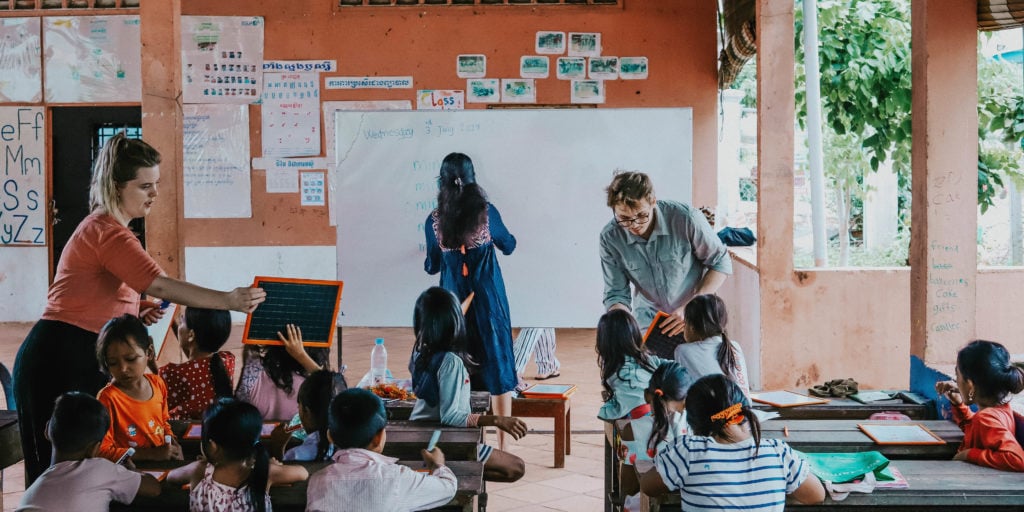
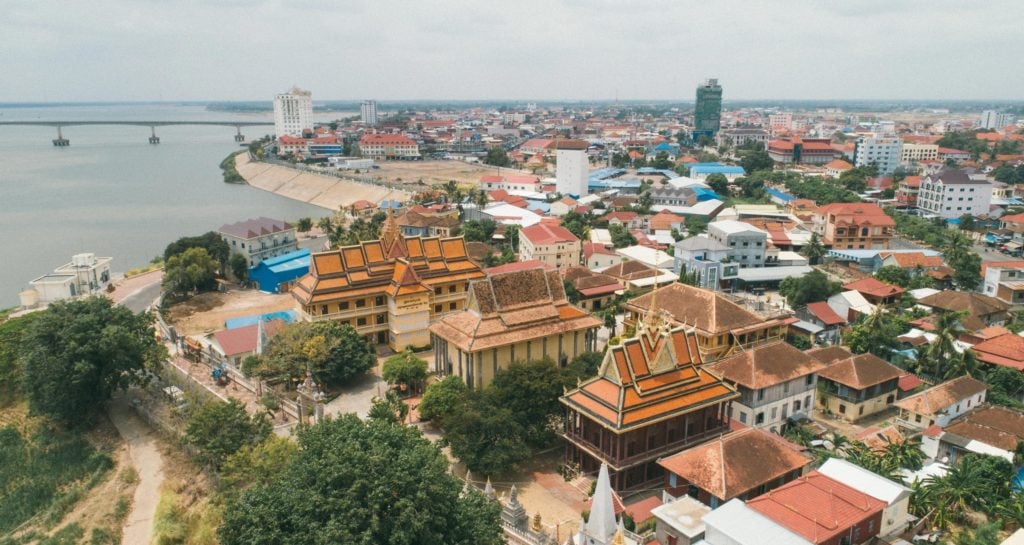
From women’s empowerment and community development to global health and early childhood education, there are a number of volunteer programs or internships you could join. GVI volunteers in Cambodia can also choose to work with local educational institutions to teach students English.
Participate in activities where you can work with members from the local community and learn about the language and culture of Cambodia first-hand.
And, have a travel experience that factors responsible tourism into the entire trip.
Take a look at GVI’s award-winning volunteer programs in Cambodia and get excited about experiencing some of the best things to do in Cambodia while volunteering abroad.
Some images by: James Wheeler, Dick Hoskins, Chetan Hireholi, Theang Rathana, dougie131172, Paul Szewczyk, Deb Dowd, Phen Phy, sachman75, Daniel Lienert, Peter Borter and JJ Ying

Explore the different types of peccaries found in Costa Rica, as well as their importance in the local ecosystem, habitats, behavior, and social structure.
GVI
Posted: May 10, 2023